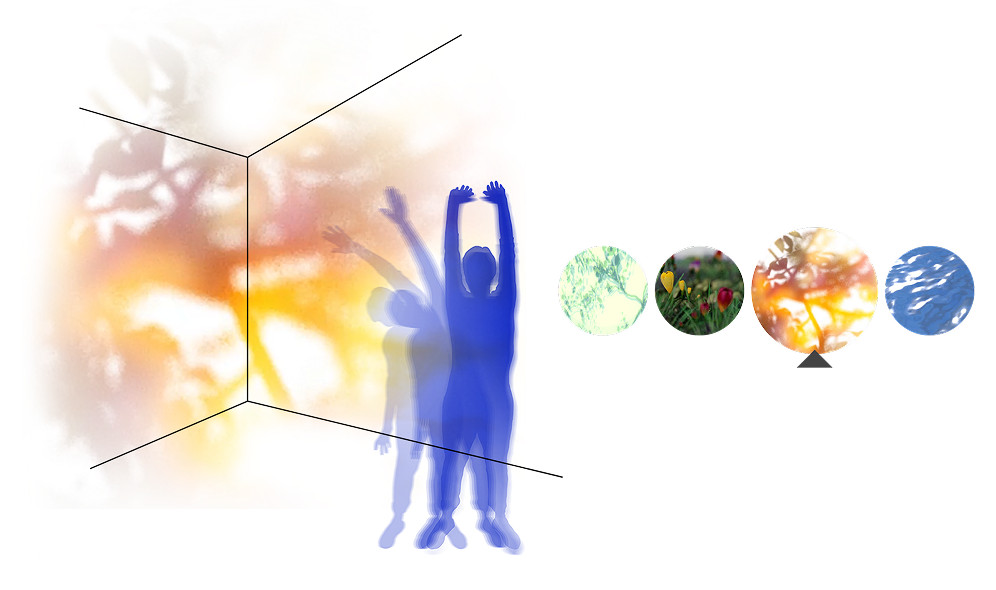
Reframing: Microbreak Learnings from an Olympian
Regardless of what you do for work – whether it’s working at a desk answering emails and phones, bringing smiles to the faces of patients, making sure customers find everything they need, or even an Olympian – it’s inevitable that frustrations and challenging emotions will arise in your workday.
The workday of an Olympian might feel worlds away from your own, but you would be amazed by how much they have in common.
Both involve stress. Frustration. Challenge. Fear of failure. Digging deeper into the confidence of your own limitations. Finding more within yourself. And landing triumphantly on your feet. (Or, firmly on a crash mat, if you’re Katerina Stefanidi).
And while the emotions created by vaulting over a pole, many meters in the air, on the world stage might seem insurmountable compared to your own work, the way they’re processed in the brain and in the body, and the way we overcome them, actually aren’t all that different.
This is one of the thousands of things we’ve learned from Katerina Stefanidi – Olympic gold medal-winning pole vaulter, and (we’re so proud to to say), Breakthru ambassador.
For Katerina, negative emotions can pop up in her workday when she doesn’t land a jump quite right. For you, perhaps it’s a disagreement with a colleague, the inevitable disgruntlement of being stuck in back-to-backs, or the ping of yet another Teams message or email landing in your inbox.
What ties them together is the importance of reframing emotions. And, being able to do so quickly, to keep them from disrupting your flow. This is where cognitive reframing comes into play – the psychological technique of identifying, challenging, and changing certain thoughts, situations, or emotions.1
Katerina Stefanidi and Reframing
There’s a lot we have to learn from Katerina Stefanidi, and cognitive reframing is one of them.
When she takes a bad jump during practice it’s easy for her to become angry with herself, ruminate on it, and let it ruin the rest of practice, and even the rest of her day.
Katerina taught us that physiologically, when we experience an emotion, it only lasts for about 90 seconds. We release hormones, we experience the emotion for about 90 seconds, and then it ends. It’s dwelling on the feeling and recreating the experience of it that leads to rumination and a longer-lasting poor mood.
This is why being able to quickly and effectively reframe emotions through reframing is so important for her, to be able to change her thinking, break the cycle of anger, and stay fluid in her training.
But it’s not just the frustrations after a bad jump that Katerina needs to reframe – it’s also fear. Believe it or not, Katerina is scared of heights, which pole vaulting involves a lot of, launching yourself many meters in the air over a bar. And, when you’re competing on the world stage, there’s also the fear of failing, the anxiety of a big competition, and the excitement.
Through her studies in sports psychology, she has learned that these two emotions, anxiety and excitement, are extremely similar to each other in terms of how they manifest in the body. Being able to reframe nerves as excitement changes the whole way you approach a competition, a project, a challenge, or anything.
Katerina has tried many different techniques over the years to reframe emotions during practice and break the cycle of negative thoughts after a bad jump. The most effective technique she’s discovered? Combining the mind and the body because, as she says “your body can change your mind”. This is how she uses Breakthru: as a fast microintervention to shake off a bad jump without breaking flow during practice—a practical form of reframing in motion.
Why is Reframing Important in Your Workday?
Maybe it’s a storm of pings from Teams or email notifications; a challenging interaction with a colleague, customer, or patient; a to-do list that feels insurmountable; the frustration of being stuck on a problem; the nerves of undertaking a new challenge or a big presentation.
No matter what you do for work, challenging and stressful emotions are bound to arise from time to time in your workday.
Your initial reaction may be anger, panic, dread, or even to question your own abilities. While these emotions are natural, they don’t have to dictate the rest of your day. As we learned from Katerina Stefanidi, the emotion itself only lasts about 90 seconds – it’s the recreating it and dwelling on it that leads to rumination, which makes it impact your day.
When we work through our emotions by reframing them, rather than suppressing them, they can become a driver for action towards the better.2
At work, knowing how to reframe negative thoughts and emotions enables us to not be overcome by them, and to work through them effectively and efficiently. It creates perspective around the emotion at hand, opens you up to all possibilities, gives the space to act instead of just react, and makes challenges easier to tackle.3
For leaders, cognitive reframing makes for a powerful tool to resolve employee conflict, enhance problem-solving or even reduce feelings of burnout or overwhelm.3 By supporting your employees and giving them the tools they need for effective reframing, you help them become more resilient, able to take on new challenges and solve problems, to work together, and to achieve even more.
How to Practice Reframing at Work
Asking questions around the emotion is one of the most commonly suggested ways to reframe, but what if there was a better, easier, faster way? One that could literally move you forward from the emotion?
Research around physical activity and mindfulness as separate practices for emotional regulation and reframing have long existed.
Now, research is emerging that the benefits are stronger when the two are combined, by improving cognitive control and learning,4 and both explicit and implicit emotional regulation.5
The mind and body exist together, as two parts of the same whole, and emotions are processed by both, together.2 Effective reframing involves a practice that combines the cognitive, the emotional, and the body.6
This is what makes microbreaks such a powerful tool for cognitive reframing: by coupling mindfulness and aerobic activity, through gentle movement and breath, you combine the cognitive, emotional, and physical aspects of emotional reframing into one, 2-minute package.
Microbreaks and Cognitive Reframing
As previously mentioned, microbreaks are highly effective for cognitive reframing, by tying together the cognitive, the emotional, and the physical into one tidy tool. In just two minutes you can literally move yourself forward through the emotion, and avoid rumination.
Tough emotions and stress happen, but they don’t have to rule the rest of your day. This is why having a fast yet highly effective fix at an easy reach in your workday is so important.
Learn it from Olympian Katerina Stefanidi: who takes microbreaks with Breakthru to reframe her emotions and thinking during practice after a bad jump. With Breakthru, she can shake off, break her emotional cycle, avoid rumination, and not let one jump break her flow and ruin the rest of the day.
Try it in your own workday: next time a challenging emotion arises, take two minutes to move and breathe your way through it, and into a better mood, and be amazed by the big impact taking a small moment to reframe can make through the power of cognitive reframing.
- Robson Jr, James P; Troutman-Jordan, Meredith (2014). "A Concept Analysis of Cognitive Reframing". Journal of Theory Construction and Testing. 18 (2).
- Margies, N. (2024). Making Sense of Change: Emotive-Cognitive Reframing of Young People in Post-crisis Spain. Cultural Sociology, 18(2), 238-257. https://doi.org/10.1177/17499755241234701(Original work published 2024)
- Czach, C. (2020, April 10). How to practice reframing during stressful situations at work. Forbes.
- Alderman, B. L., Olson, R. L., Brush, C. J., & Shors, T. J. (2016). MAP training: combining meditation and aerobic exercise reduces depression and rumination while enhancing synchronized brain activity. Translational psychiatry, 6(2), e726. https://doi.org/10.1038/tp.2015.225
- Zhang, Y., Fu, R., Sun, L., Gong, Y., & Tang, D. (2019). How Does Exercise Improve Implicit Emotion Regulation Ability: Preliminary Evidence of Mind-Body Exercise Intervention Combined With Aerobic Jogging and Mindfulness-Based Yoga. Frontiers in psychology, 10, 1888. https://doi.org/10.3389/fpsyg.2019.01888
- Margies, N. (2024). Emotions in crisis: Youth and social change in Spain. Bristol University Press. Emotions in Crisis
Breakthru in the World
Request a demo to learn how teams stay sharper, healthier, and more connected with Breakthru
See how science-backed, 2-minute microbreaks can boost focus, motivation, and resilience for your organization.

Join the
45,000+
corporations, educational
communities, and non-profits
worldwide using Breakthru.















